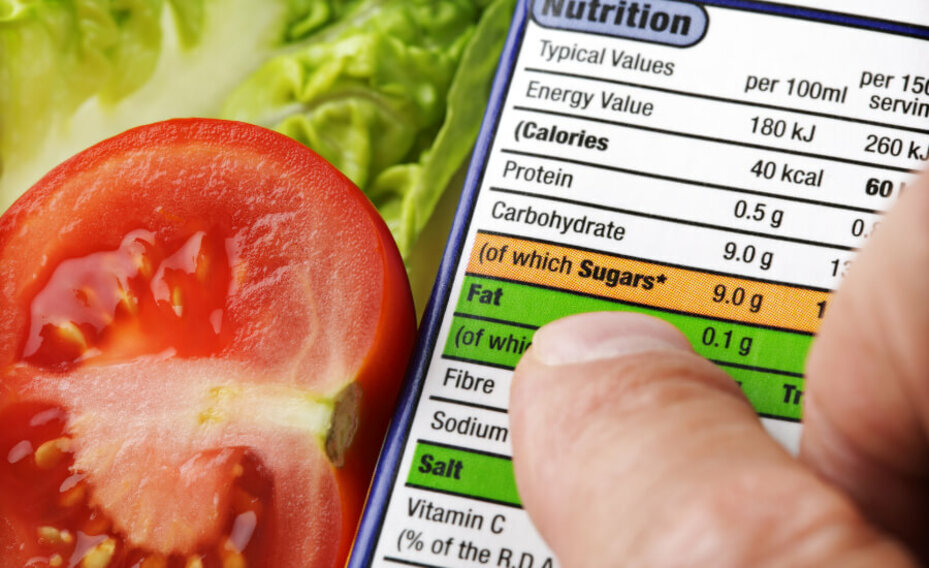Information on food labels.
Food labels should help us understand their contents, in order to safely include any product in our diet and also help us design our shopping list. However, sometimes these labels use terms or data that can confuse us, if some basic concepts are not known. Below we detail some key aspects of food labeling that we have obtained from consulting various medical guidelines related to nutrition and diabetes.
The carbohydrates
When selecting a food product, look on the label for total carbohydrates, not just sugars. Remember that all carbohydrates, increase blood glucose. Evaluate the grams of total carbohydrates instead of just the grams of sugar. If you focus on the sugar content, you could miss naturally nutritious foods high in sugar, such as fruit and milk. There also foods out there without natural or added sugar, but with lots of carbohydrates, like certain cereals and grains. It is also advisable not to skip fibre-rich foods. Look for foods with three or more grams of fibre.
Sugar-free products
It is important to remember that sugar-free does not mean carbohydrate-free. Sugar-free foods may play a role in your diabetes diet, but remember that carbohydrates are also important to consider. When you choose between standard products and their sugar-free equivalents, compare food labels. If the sugar-free product has fewer carbohydrates, then the sugar-free product might be the best option. But if there is little difference in grams of carbohydrate between the two foods, let the taste or price decide.
Fats
In general, experts recommend choosing foods with a lower fat content, especially those low in saturated fat and cholesterol. Per gram, fat has more than twice as many calories as carbohydrates or protein. If you're trying to control your caloric intake, fat-free foods may seem like just what you need. But don't be fooled by fat-free food labels. Fat-free foods can have more carbohydrates and as many calories as the standard version of the same food.
Choose healthier fats. Although they are high in calories, monounsaturated fats (e.g. avocado, canola oil, olive oil, nuts) and polyunsaturated fats (e.g. sunflower oil) are better options. Monounsaturated fats help to reduce cholesterol and protect the heart. Trans and saturated fats (e.g. animal fat, cream, full-cream dairy products) increase cholesterol and the risk of heart disease. Trans fats can be found in certain processed foods, for example, baked goods, microwave popcorn or certain brick margarines – check the food label to be sure whether or not a food product contains trans fats.
Two more tips.
- Pay attention to portion sizes. The portion sizes on food labels may differ from the portion sizes in your diet.
- Take into account the calories you should eat each day. The same goes for the daily value on food labels. This percentage, based on a 2 000-calorie daily diet, helps you calculate how much of a nutrient is in one serving of food compared to recommendations for the whole day.
References:
1. Web Fundación para la diabetes https://www.fundaciondiabetes.org/general/articulo/63/el-etiquetado-de-los-alimentos
2. Taking a closer look at labels. American Diabetes Association. http://www.diabetes.org/food-and-fitness/food/what-can-i-eat/taking-a-closer-look-at-labels.html. Accessed Aug. 18, 2016.
3. The basics of the nutrition facts panel. Academy of Nutrition and Dietetics. http://www.eatright.org/resource/food/nutrition/nutrition-facts-and-food-labels/the-basics-of-the-nutrition-facts-panel. Accessed Aug. 18, 2016.
4. New and improved Nutrition Facts label. U.S. Food and Drug Administration. https://www.fda.gov/Food/LabelingNutrition/ucm537159.htm. Accessed Feb. 18, 2019.
5. Types of carbohydrates. American Diabetes Association. http://www.diabetes.org/food-and-fitness/food/what-can-i-eat/understanding-carbohydrates/types-of-carbohydrates.html. Accessed Aug. 18, 2016.
